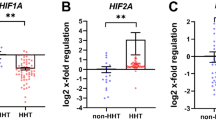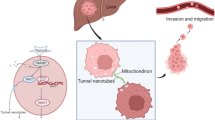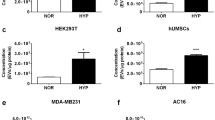Abstract
The HMGI proteins (HMGI, HMGY and HMGI-C) have an important role in the chromatin organization and interact with different transcriptional factors. The HMGI genes are expressed at very low levels in normal adult tissues, whereas they are very abundant during embryonic development and in several experimental and human tumours. In order to isolate proteins interacting with the HMGI(Y) proteins, a yeast two-hybrid screening was performed using the HMGI(Y) protein as bait. This analysis led to the isolation of homeodomain-interacting protein kinase-2 (HIPK2), a serine/threonine nuclear kinase. HIPK2 co-immunoprecipitates with the HMGI(Y) protein in 293T cells. The interaction between HIPK2 and HMGI(Y) occurs through the PEST domain of HIPK2 and it is direct because in vitro translated HIPK2 binds HMGI(Y). We also show that HIPK2 is able to phosphorylate the HMGI(Y) protein by an in vitro kinase assay. In order to understand a possible role of HIPK2 gene in cell growth we performed a colony assay which showed an impressive HIPK2 inhibitory effect on normal thyroid cells. Flow cytometric analysis would indicate the block of cell growth at the G2/M phase of the cell cycle. Since normal thyroid cells do not express detectable HMGI(Y) protein levels, we assume that the HIPK2 inhibitory effect is independent from the interaction with the HMGI(Y) protein.
This is a preview of subscription content, access via your institution
Access options
Subscribe to this journal
Receive 50 print issues and online access
$259.00 per year
only $5.18 per issue
Buy this article
- Purchase on SpringerLink
- Instant access to full article PDF
Prices may be subject to local taxes which are calculated during checkout






Similar content being viewed by others
References
Abe N, Watanabe T, Sugiyama M, Uchimura H, Chiappetta G, Fusco A, Atomi Y . 1999 Cancer Res. 56: 1896–1901
Abe N, Watanabe T, Masaki T, Mori T, Sugiyama M, Uchimura H, Fujioka Y, Chiappetta G, Fusco A, Atomi Y . 2000 Cancer Res. 60: 3117–3122
Altschul SF, Gish W, Miller W, Myers EW, Lipman DJ . 1990 J. Mol. Biol. 215: 403–410
Appel RD, Bairoch A, Hochstrasser DF . 1994 Trends Biochem. Sci. 19: 258–260
Ashar HR, Schoenberg Fejzo M, Tkachenko A, Zhou X, Fletcher JA, Weremowicz S, Morton CC, Chada K . 1995 Cell 82: 57–65
Bandiera A, Bonifacio D, Manfioletti G, Mantovani F, Rustighi A, Zanconati F, Fusco A, Di Bonito L, Giancotti V . 1998 Cancer Res. 58: 426–431
Battista S, Fidanza V, Fedele M, Klein-Szanto AJ, Outwater E, Brunner H, Santoro M, Croce CM, Fusco A . 1999 Cancer Res. 59: 4793–4797
Baldassarre G, Barone MV, Belletti B, Sandomenico C, Bruni P, Spiezia S, Boccia A, Vento MT, Romano A, Pepe S, Fusco A, Viglietto G . 1999 Oncogene 18: 6241–6251
Berlingieri MT, Mantioletti G, Santoro M, Bandiera A, Visconti R, Giancotti V, Fusco A . 1995 Mol. Cell. Biol. 15: 1545–1553
Chiappetta G, Bandiera A, Berlingieri MT, Visconti R, Manfioletti G, Battista S, Martinez-Tello FJ, Santoro M, Giancotti V, Fusco A . 1995 Oncogene 10: 1307–1314
Chiappetta G, Avantaggiato V, Visconti R, Fedele M, Battista S, Trapasso F, Merciai BM, Fidanza V, Giancotti V, Santoro M, Simeone A, Fusco A . 1996 Oncogene 13: 2439–2446
Chiappetta G, Tallini G, De Biasio MC, Manfioletti G, Martines-Tello FJ, Pentimalli F, De Nigris F, Mastro A, Botti G, Fedele M, Bergen N, Santoro M, Giancotti V, Fusco A . 1998 Cancer Res. 58: 4193–4198
Chiappetta G, Manfioletti G, Pentimalli F, Abe N, Di Bonito M, Vento MT, Giuliano A, Fedele M, Viglietto G, Santoro M, Watanabe T, Giancotti V, Fusco A . 2001 Int. J. Cancer 91: 147–151
Chiariotti L, Benvenuto G, Fedele M, Santoro M, Simeone A, Fusco A, Bruni CB . 1998 Genomics. 47: 258–265
Choi YC, Kim YH, Kwon HJ, Kim Y . 1999 J. Biol. Chem. 274: 33194–33197
Du W, Maniatis T . 1994 Proc. Natl. Acad. Sci. USA 91: 11318–11322
Falvo JV, Thanos D, Maniatis T . 1995 Cell 83: 1101–1111
Fashena ST, Reeves R, Ruddle NH . 1992 Mol. Cell. Biol. 12: 894–903
Fedele M, Bandiera A, Chiappetta G, Battista S, Viglietto G, Manfioletti G, Casamassimi A, Santoro M, Giancotti V, Fusco A . 1996 Cancer Res. 56: 1896–1901
Fedele M, Benvenuto G, Pero R, Majello B, Battista S, Lembo F, Vollono E, Day PM, Santoro M, Lania L, Bruni CB, Fusco A, Chiariotti L . 2000 J. Biol. Chem. 275: 7894–7901
Feinberg AP, Vogelstein B . 1983 Anal. Biochem. 132: 6–13
Fusco A, Berlingieri MT, Di Fiore PP, Portella G, Grieco M, Vecchio G . 1987 Mol. Cell. Biol. 7: 3365–3370
Giancotti V, Berlingieri MT, Di Fiore PP, Fusco A, Vecchio G, Crane-Robinson C . 1985 Cancer Res. 45: 6051–6057
Giancotti V, Pani B, D'Andrea P, Berlingieri MT, Di Fiore PP, Fusco A, Vecchio G, Philip R, Crane-Robinson C, Nicolas RH, Wright CA, Goodwin GH . 1987 EMBO J. 6: 1981–1987
Giancotti V, Buratti E, Perissin L, Zorzet S, Balmain A, Portella G, Fusco A, Goodwin GH . 1989 Exp. Cell. Res. 184: 538–545
Graham FL, Van der Eb AJ . 1973 Virology 52: 456–467
Grosschedl R, Giese K, Pagel J . 1994 Trends Genet. 10: 94–100
Hedley ML, Amrein H, Maniatis T . 1995 Proc. Natl. Acad. Sci. USA 92: 11524–11528
Johnson KR, Lehn DA, Elton TS, Barr PJ, Reeves R . 1988 J. Biol. Chem. 263: 18338–18342
Johnson KR, Lehn DA, Reeves R . 1989 Mol. Cell. Biol. 9: 2114–2123
Krishan A . 1975 J. Cell. Biol. 66: 188–193
Kim YH, Choi CY, Lee S, Conti MA, Kim Y . 1998 J. Biol. Chem. 273: 25875–25879
Kim YH, Choi CY, Kim Y . 1999 Proc. Natl. Acad. Sci. USA 96: 12350–12355
Li X, Wang Y, Debatin KM, Hug H . 2000 Biochem. Biophys. Res. Commun. 277: 513–517
Lovell-Badge R . 1995 Nature 376: 725–726
Manfioletti G, Giancotti V, Bandiera A, Buratti E, Sautiere P, Cary P, Crane-Robinson C, Coles B, Goodwin GH . 1991 Nucleic Acids Res. 19: 6793–6797
Motokura T, Keyomarsi K, Kronenberg HM, Arnold A . 1992 J. Biol. Chem. 267: 20412–20415
Polyak K, Lee M, Koff A, Roberts JM, Massague J . 1994 Cell 78: 59–66
Rochat-Steiner V, Becker K, Micheau O, Schneider P, Burns K, Tschopp J . 2000 J. Exp. Med. 192: 1165–1174
Rogers S, Wells R, Rechsteiner M . 1986 Science 234: 3674–3680
Sambrook J, Fritsch EF, Maniatis T . 1989 Molecular Cloning, A Laboratory Manual Cold Spring Harbor Laboratory Press
Sanger F, Nicklen S, Coulson AR . 1977 Proc. Natl. Acad. Sci. USA 74: 5463–5467
Schoenmakers E, Wanschura S, Mols R, Bullerdiek J, Van den Berghe H, Van de Ven WJM . 1995 Nat. Genet. 10: 436–443
Tamimi Y, Van Der Poel HG, Denyn MM, Umbas R, Karthaus HFM, Debruyne FMJ, Shalken JA . 1993 Cancer Res. 53: 5512–5516
Thanos D, Maniatis T . 1992 Cell 71: 777–789
Thanos D, Maniatis T . 1995 Cell 83: 1091–1100
Tkachenko A, Ashar HR, Meloni AM, Sandberg AA, Chada KK . 1997 Cancer Res. 57: 2276–2280
Vojtek AB, Hollenberg SM . 1995 Methods Enzymol. 255: 331–342
Xiao S, Lux ML, Reeves R, Hudson TJ, Fletcher JA . 1997 Am. J. Pathol. 150: 901–910
Zhou X, Benson KF, Ashar HR, Chada K . 1995 Nature 376: 771–774
Acknowledgements
This work has been supported by grants from AIRC (Progetto Speciale Oncosoppressori), the Progetto Finalizzato ‘Biotecnologie’ of the CNR, the MURST projects ‘Terapie antineoplastiche innovative’ and ‘Piani di Potenziamento della Rete Scientifica e Tecnologica’, and from the ‘Ministero della Sanitá’. We thank the Associazione Partenopea per le Ricerche Oncologiche (APRO) for its support. We thank S Gutkind for the pCEFL-HA plasmid. GM Pierantoni is supported by a Fondazione Italiana per la Ricerca sul Cancro (FIRC) fellowship. We are grateful to Jean Gilder for editing the text.
Author information
Authors and Affiliations
Corresponding author
Rights and permissions
About this article
Cite this article
Pierantoni, G., Fedele, M., Pentimalli, F. et al. High mobility group I (Y) proteins bind HIPK2, a serine-threonine kinase protein which inhibits cell growth. Oncogene 20, 6132–6141 (2001). https://doi.org/10.1038/sj.onc.1204635
Received:
Revised:
Accepted:
Published:
Issue date:
DOI: https://doi.org/10.1038/sj.onc.1204635
Keywords
This article is cited by
-
Double knock-out of Hmga1 and Hipk2 genes causes perinatal death associated to respiratory distress and thyroid abnormalities in mice
Cell Death & Disease (2019)
-
RPSAP52 lncRNA is overexpressed in pituitary tumors and promotes cell proliferation by acting as miRNA sponge for HMGA proteins
Journal of Molecular Medicine (2019)
-
High mobility group A1 protein expression reduces the sensitivity of colon and thyroid cancer cells to antineoplastic drugs
BMC Cancer (2014)
-
HIPK2 sustains apoptotic response by phosphorylating Che-1/AATF and promoting its degradation
Cell Death & Disease (2014)
-
Downregulation of HMGA-targeting microRNAs has a critical role in human pituitary tumorigenesis
Oncogene (2012)



